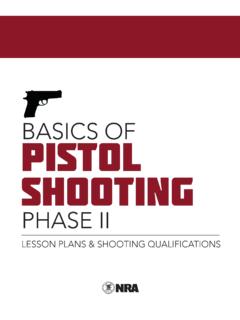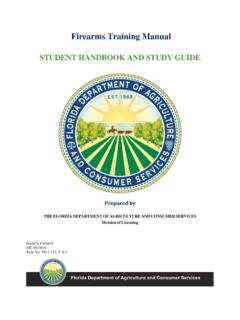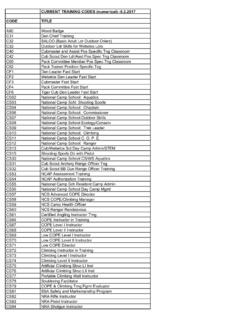Transcription of REPORT OF THE NATIONAL ADVISORY COMMISSION ON …
1 REPORT OF THE NATIONAL ADVISORY COMMISSION ON CIVIL DISORDERS SUMMARY OF REPORT INTRODUCTION The summer of 1967 again brought racial disorders to American cities, and with them shock, fear and bewilderment to the nation. The worst came during a two-week period in July, first in Newark and then in Detroit. Each set off a chain reaction in neighboring communities. On July 28, 1967, the President of the United States established this COMMISSION and directed us to answer three basic questions: What happened? Why did it happen? What can be done to prevent it from happening again? To respond to these questions, we have undertaken a broad range of studies and investigations.
2 We have visited the riot cities; we have heard many witnesses; we have sought the counsel of experts across the country.. This is our basic conclusion: Our nation is moving toward two societies, one black, one white--separate and unequal. Reaction to last summer's disorders has quickened the movement and deepened the division. Discrimination and segregation have long permeated much of American life; they now threaten the future of every American. This deepening racial division is not inevitable. The movement apart can be reversed. Choice is still possible. Our principal task is to define that choice and to press for a NATIONAL resolution. To pursue our present course will involve the continuing polarization of the American community and, ultimately, the destruction of basic democratic values.
3 The alternative is not blind repression or capitulation to lawlessness. It is the realization of common opportunities for all within a single society. This alternative will require a commitment to NATIONAL action--compassionate, massive and sustained, backed by the resources of the most powerful and the richest nation on this earth. From every American it will require new attitudes, new understanding, and, above all, new will. The vital needs of the nation must be met; hard choices must be made, and, if necessary, new taxes enacted. Violence cannot build a better society. Disruption and disorder nourish repression, not justice. They strike at the freedom of every citizen.
4 The community cannot--it will not--tolerate coercion and mob rule. Violence and destruction must be ended--in the streets of the ghetto and in the lives of people. Segregation and poverty have created in the racial ghetto a destructive environment totally unknown to most white Americans. What white Americans have never fully understood but what the Negro can never forget--is that white society is deeply implicated in the ghetto. White institutions created it, white institutions maintain it, and white society condones it. It is time now to turn with all the purpose at our command to the major unfinished business of this nation. It is time to adopt strategies for action that will produce quick and visible progress.
5 It is time to make good the promises of American democracy to all citizens-urban and rural, white and black, Spanish-surname, American Indian, and every minority group. Our recommendations embrace three basic principles: * To mount programs on a scale equal to the dimension of the problems: * To aim these programs for high impact in the immediate future in order to close the gap between promise and performance; * To undertake new initiatives and experiments that can change the system of failure and frustration that now dominates the ghetto and weakens our society. These programs will require unprecedented levels of funding and performance, but they neither probe deeper nor demand more than the problems which called them forth.
6 There can be no higher priority for NATIONAL action and no higher claim on the nation's conscience. We issue this REPORT now, four months before the date called for by the President. Much remains that can be learned. Continued study is essential. As Commissioners we have worked together with a sense of the greatest urgency and have sought to compose whatever differences exist among us. Some differences remain. But the gravity of the problem and the pressing need for action are too clear to allow further delay in the issuance of this REPORT . PART I--WHAT HAPPENED? Chapter I--Profiles of Disorder The REPORT contains profiles of a selection of the disorders that took place during the summer of 1967.
7 These profiles are designed to indicate how the disorders happened, who participated in them, and how local officials, police forces, and the NATIONAL Guard responded. Illustrative excerpts follow: NEWARK .. It was decided to attempt to channel the energies of the people into a nonviolent protest. While Lofton promised the crowd that a full investigation would be made of the Smith incident, the other Negro leaders began urging those on the scene to form a line of march toward the city hall. Some persons joined the line of march. Others milled about in the narrow street. From the dark grounds of the housing project came a barrage of rocks. Some of them fell among the crowd.
8 Others hit persons in the line of march. Many smashed the windows of the police station. The rock throwing, it was believed, was the work of youngsters; approximately 2,500 children lived in the housing project. Almost at the same time, an old car was set afire in a parking lot. The line of march began to disintegrate. The police, their heads protected by World War I-type helmets, sallied forth to disperse the crowd. A fire engine, arriving on the scene, was pelted with rocks. As police drove people away from the station, they scattered in all directions. A few minutes later a nearby liquor store was broken into. Some persons, seeing a caravan of cabs appear at city hall to protest Smith's arrest, interpreted this as evidence that the disturbance had been organized, and generated rumors to that effect.
9 However, only a few stores were looted. Within a short period of time, the disorder appeared to have run its course . * * * .. On Saturday, July 15, [Director of Police Dominick] Spina received a REPORT of snipers in a housing project. When he arrived he saw approximately 100 NATIONAL Guardsmen and police officers crouching behind vehicles, hiding in corners and lying on the ground around the edge of the courtyard. Since everything appeared quiet and it was broad daylight, Spina walked directly down the middle of the street. Nothing happened. As he came to the last building of the complex, he heard a shot. All around him the troopers jumped, believing themselves to be under sniper fire.
10 A moment later a young Guardsman ran from behind a building. The Director of Police went over and asked him if he had fired the shot. The soldier said yes, he had fired to scare a man away from a window; that his orders were to keep everyone away from windows. Spina said he told the soldier: "Do you know what you just did? You have now created a state of hysteria. Every Guardsman up and down this street and every state policeman and every city policeman that is present thinks that somebody just fired a shot and that it is probably a sniper." A short time later more "gunshots" were heard. Investigating, Spina came upon a Puerto Rican sitting on a wall. In reply to a question as to whether he knew "where the firing is coming from?










